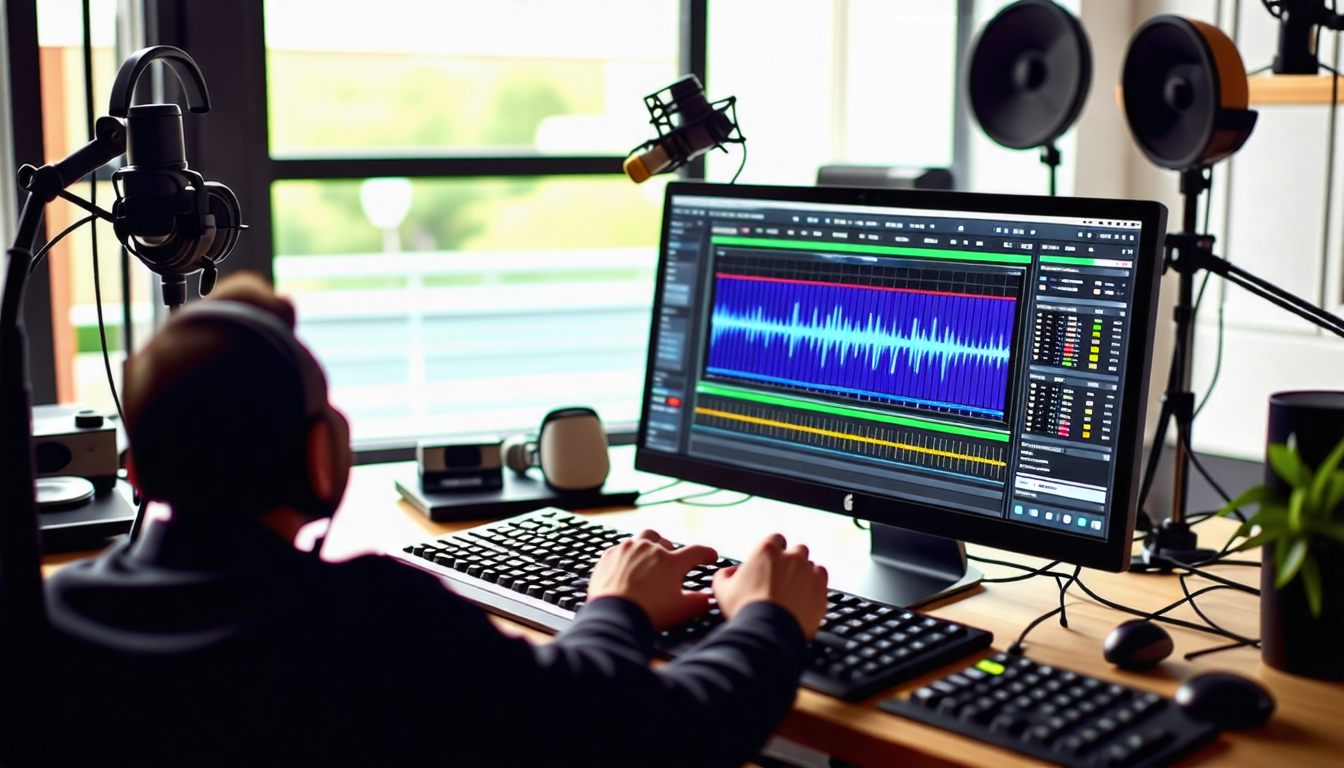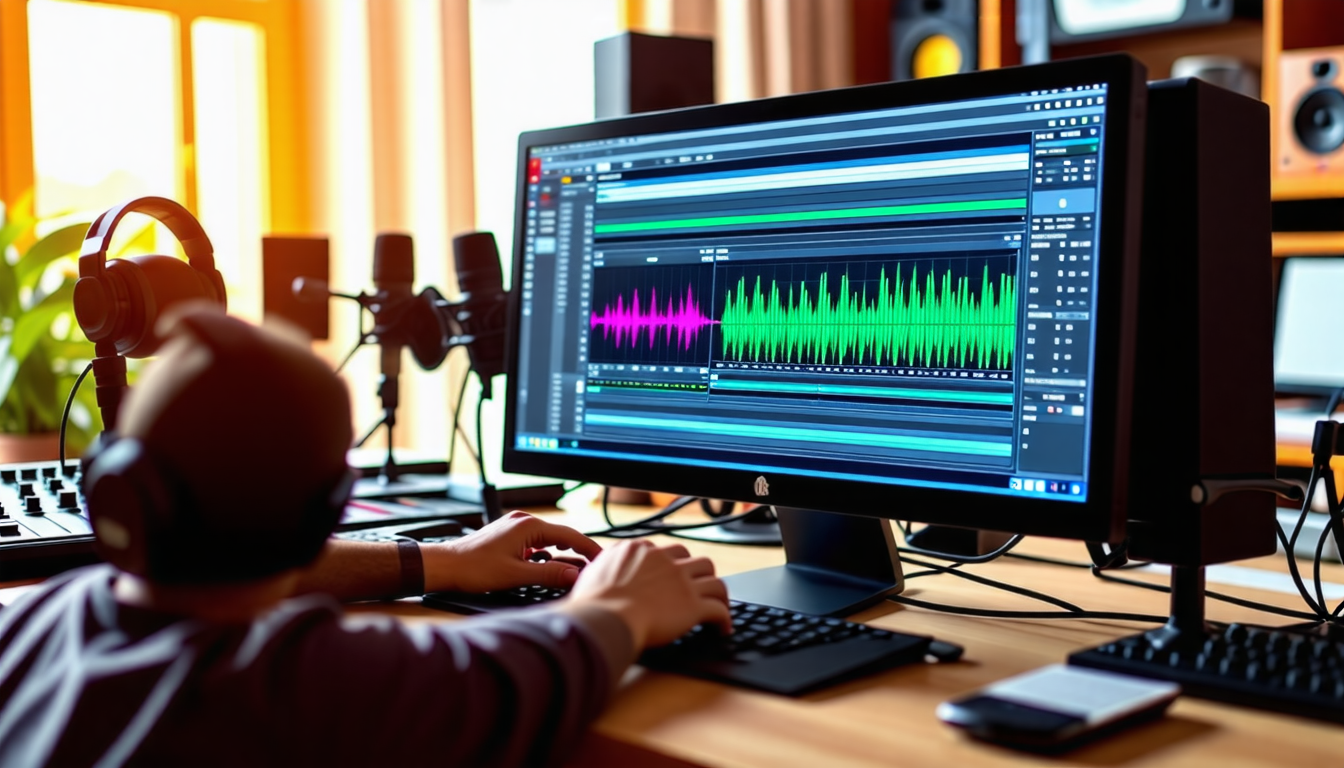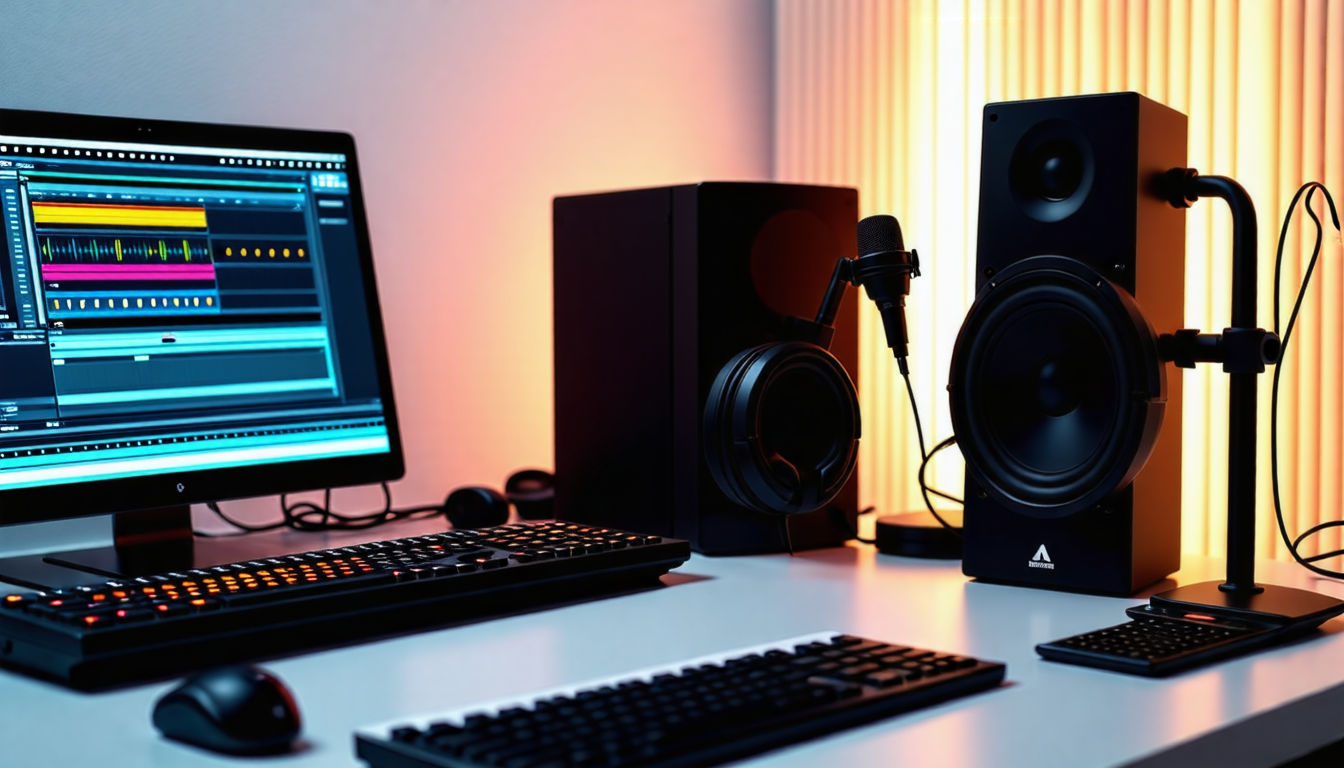|
IN BRIEF
|
In today’s digital landscape, mastering sound editing software is essential for any audio professional aiming to enhance their projects. Effectively utilizing these powerful tools can significantly elevate the overall quality of your work, whether it’s for film, television, or any other audio-visual medium. The process involves not just technical know-how but also an artistic approach to manipulating sound elements.
Understanding the requirements of your project is the first step. This enables you to choose the right software and features tailored to your needs. Familiarization with tools for multitrack editing, level adjustments, and effects application cannot be underestimated. This guide will delve into essential techniques that streamline your audio editing process, ensuring you achieve professional-sounding results efficiently.

Understanding Your Sound Editing Software
To use sound editing software effectively, it’s crucial to have a comprehensive understanding of its features and functionalities. Every software offers a unique interface, and familiarizing yourself with it allows for a smoother editing experience. Observing how the different tools function can lead to mastering the interface quickly.
Key Features to Focus On
Each editing program comes equipped with a variety of essential features. For instance, look out for options like multitrack editing, which enables you to work with multiple audio tracks simultaneously. This feature is particularly beneficial when mixing background music with voiceovers or sound effects. Additionally, understanding sound mixing tools can greatly enhance the overall quality of your final audio.
Organizing Your Audio Files
An organized workflow is vital for efficiency in sound editing. Start by categorizing your audio files attentively; this practice can save considerable time later on. Label each file clearly based on its content, such as dialogue, ambient noises, or music cues. This system will make locating specific elements quicker and will streamline your editing process considerably.
Segmentation of Projects
When working with large projects, it’s beneficial to break them into smaller segments. By tackling each section individually, you can concentrate on perfecting one portion at a time, leading to a more polished sound overall. This method also aids in reducing the potential for overwhelm, contributing to higher productivity.
Utilizing Shortcuts and Hotkeys
Efficiency can be significantly boosted by incorporating keyboard shortcuts and hotkeys into your workflow. Most editing software, including popular options like EnergyXT, allows users to customize these shortcuts. Learn and adapt to the most used commands to reduce time spent navigating menus and enhance your editing speed.
Streamlining Your Editing Process
By mastering these shortcuts, you can execute common tasks, such as cutting, copying, and pasting audio clips, much faster. This proficiency translates into a smoother editing workflow and allows for more time to focus on creative decisions instead of mechanical tasks.
Improving Audio Quality
Making sound edits often requires you to clean up the audio for a professional finish. Begin this process by using noise reduction features available in your software. Always keep in mind that removing unwanted background noise is essential for a clear sound. Programs like EnergyXT provide various tools specifically designed for this purpose.
Equalization Techniques
Equalization is another crucial aspect of enhancing audio quality. This involves adjusting various frequencies within your tracks. Learning how to manipulate EQ settings helps in balancing your audio and can drastically improve the final product. It is especially relevant when mixing different audio sources where certain frequencies may clash.
Editing Techniques and Practices
Effective audio editing goes beyond cleaning and mixing. Familiarity with editing techniques is fundamental. Mastering the art of cutting and trimming audio clips can help in removing unnecessary sections, thereby tightening your overall presentation. Making precise cuts at the correct sonic points will enhance the continuity of the audio.
Creating Smooth Transitions
Transitions play a vital role in maintaining flow within audio segments. Utilizing crossfades allows for a more gradual transition between audio clips, reducing abrupt changes that can disrupt listener immersion. This technique is particularly important in multimedia projects like films or advertisements.
Incorporating External Resources
Don’t hesitate to incorporate external resources into your audio projects. Look for sound effects libraries or sample packs that can add an extra dimension to your audio. Sites offer a plethora of royalty-free sounds that can elevate your work without breaking copyright laws. Integrating these sound elements wisely can significantly amplify the effectiveness of your audio project.
Leveraging User Communities
Engaging with user communities can provide valuable insights into best practices for audio editing. Observing how experienced editors apply sound principles in their projects can be a great learning opportunity. Platforms like Reddit often host discussions around editing tips and tricks that can provide guidance during your editing process.
Seeking Feedback and Collaboration
Obtaining feedback is crucial for growth. Regularly sharing your work with peers can help identify areas for improvement that you might not have noticed. Constructive criticism can offer insights into different approaches and can inspire new ideas.
Collaborative Projects
Participating in collaborative projects can broaden your skill set and expose you to diverse methods of sound editing. Collaborating allows for sharing knowledge and techniques which can enrich your own editing abilities while working towards a common goal.
Staying Updated on Trends
The field of audio editing is constantly evolving, with new software updates and techniques emerging regularly. Keeping yourself informed about the latest trends can help maintain your competitive edge. Reviewing case studies or following audio editing professionals through their social media platforms can offer insights into contemporary best practices.
Continuous Learning
Finally, consider investing time in online courses or workshops. Many platforms offer tutorials specifically for sound editing software, helping you master advanced techniques and new functionalities. This continuous learning is essential for personal and professional development in audio editing.
In the landscape of audio editing, effectively utilizing sound editing software can lead to impressive results when approached with the right strategies. By focusing on organizing files, mastering tools, and learning continuous techniques, you set a strong foundation for your future projects.

Utilizing sound editing software effectively is essential for achieving high-quality audio output. Start by familiarizing yourself with the software’s interface and features, as this knowledge will streamline your editing process. It’s advisable to break down large projects into smaller, manageable segments to maintain focus and efficiency. Additionally, make use of multitrack editing capabilities to seamlessly mix dialogue, sound effects, and music. Don’t hesitate to seek feedback from peers, as collaboration often yields valuable insights. Regularly practice techniques such as noise reduction and trimming to enhance your skills. Embrace experimentation within the software to discover unique effects, and always stay updated on the latest tools and trends in audio production.

